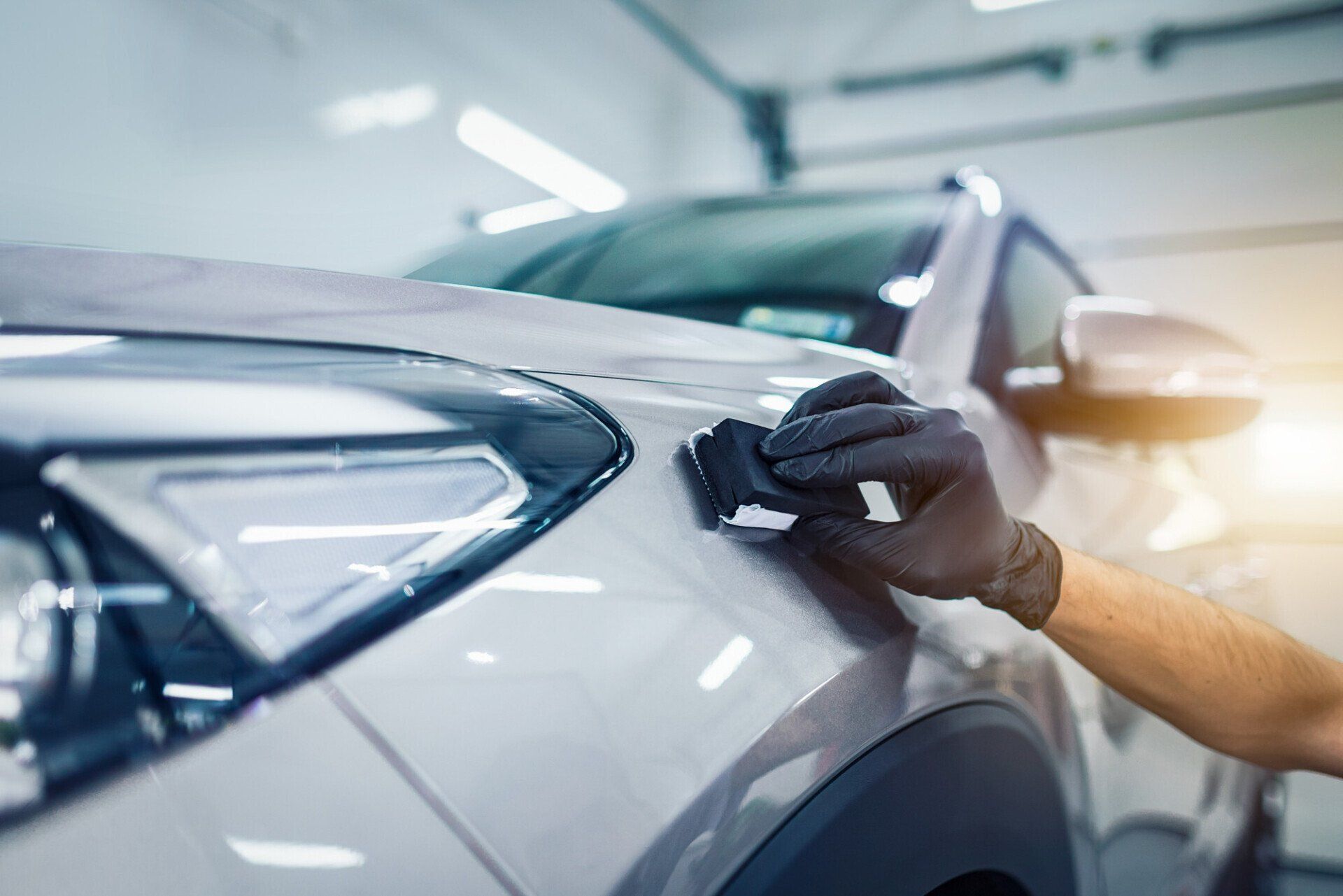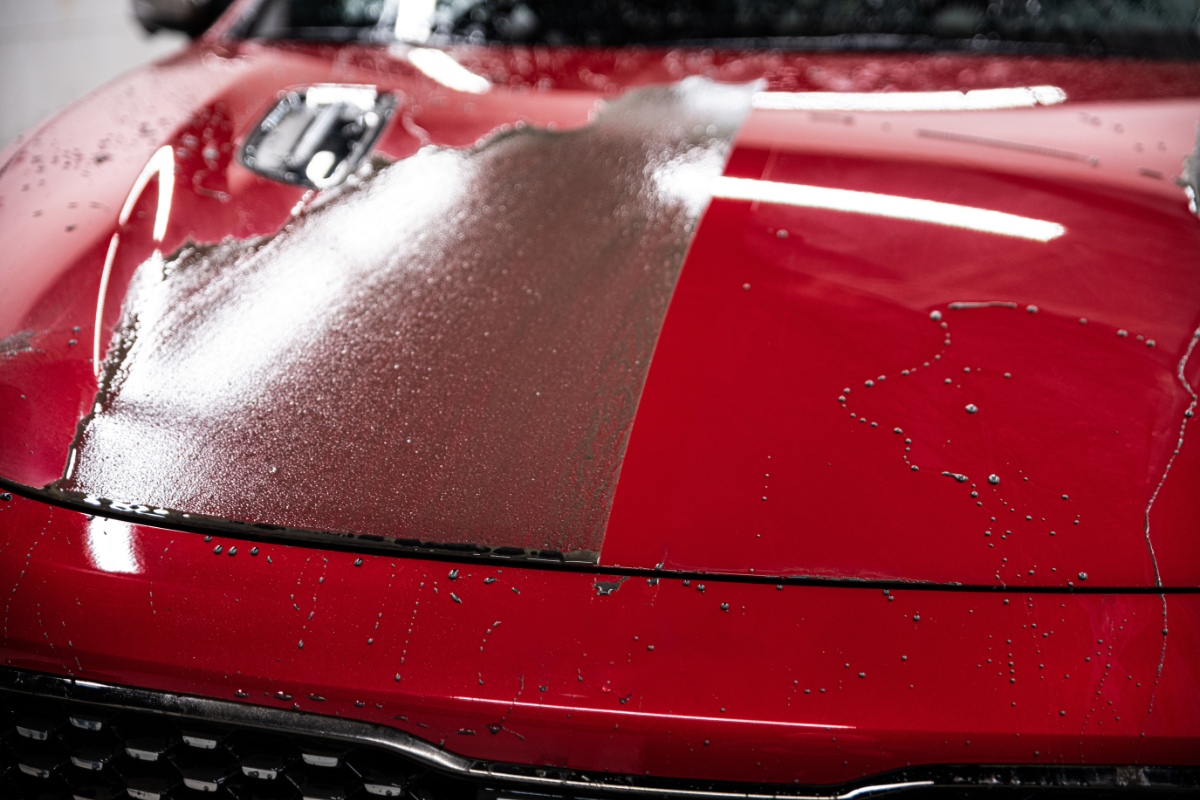Ceramic Finishing: The Secret to a Lasting Shine
Ceramic layer has emerged as a crucial solution for car proprietors looking for to enhance the sturdiness and visual allure of their automobiles. Comprehending the ins and outs of ceramic coating-- from its application process to maintenance techniques-- can substantially influence its effectiveness and longevity.
What Is Ceramic Finishing?
Comprehending ceramic layer starts with recognizing it as a liquid polymer applied to the exterior surfaces of cars. This sophisticated product develops a chemical bond with the automobile's paint, developing a safety layer that boosts longevity and visual allure. Unlike typical wax or sealers, which give short-lived protection, ceramic coverings provide a lasting service, typically surpassing two years or more with proper upkeep.

Application of ceramic layer needs careful prep work, including comprehensive cleansing and decontamination of the vehicle's surface area. The process typically entails several layers, each adding to the total stamina and effectiveness of the layer. The result is a shiny surface that not only improves the visual charm of the car yet likewise works as a powerful obstacle against the components, making sure that the vehicle keeps its beautiful problem in time.

Advantages of Ceramic Finish
The advantages of ceramic layer prolong much beyond its impressive safety qualities. Among one of the most considerable advantages is its capability to boost the aesthetic allure of surfaces. The shiny finish supplied by ceramic coatings not only boosts the visual effect of vehicles however additionally helps keep that face-lift for an extensive period.
In enhancement to aesthetics, ceramic finishes offer exceptional durability - Moro Auto Spa ceramic coating. Unlike conventional wax or sealers, which require frequent reapplication, ceramic finishes can last for a number of years with minimal upkeep. This longevity converts to cost savings with time, as fewer products and less labor are required for upkeep
Moreover, ceramic coverings offer exceptional resistance versus ecological pollutants, such as UV rays, bird droppings, and tree sap, which can create damages to paintwork. They likewise develop a hydrophobic surface area, making it easier to cleanse and decreasing the accumulation of dirt and grime.
Last but not least, ceramic layers enhance the resale value of cars by maintaining their exterior problem. In recap, the benefits of ceramic covering include both aesthetic and functional improvements, making it a necessary investment for automobile proprietors looking for lasting protection and sparkle.
How Ceramic Coating Works
Ceramic finish bonds with the surface at a molecular degree, producing a robust protective layer that enhances resilience and longevity. This advanced innovation utilizes a liquid polymer, generally made from silicon dioxide (SiO2), which, upon application, interacts with the surface area to create a covalent bond. This process results in a semi-permanent guard that is resistant to environmental pollutants, UV rays, and extreme chemicals.
The hydrophobic homes of ceramic layers enable water and dirt to grain up and roll off the surface, making maintenance dramatically much easier. In addition, the coating offers a high-gloss coating that boosts the look of the underlying product, whether it be steel, paint, or glass. The density of the ceramic layer adds to its effectiveness, as it can stand up to minor scratches have a peek here and physical abrasions, thus protecting the stability of the surface below.
In addition, the toughness of ceramic layers indicates that they can last for many years when appropriately maintained, supplying a long-lasting service for surface security. The application of ceramic finishing not only safeguards versus wear and tear but additionally delivers a visual improvement, making it a popular selection among commercial and automotive applications alike.
Application Refine
When it involves using ceramic covering, prep work is vital to attaining optimal results. The surface must be carefully cleaned to remove any type of dust, oil, or contaminants that might hinder bond. This normally involves a multi-step cleaning procedure, including making use of a pH-balanced vehicle hair shampoo complied with by a clay bar therapy to remove ingrained bits.

After paint correction, the area needs to be wiped down with an isopropyl alcohol solution to ensure it is devoid of residues and oils. The ceramic finish can then be used using a foam applicator, operating in tiny sections. It is crucial to adhere to the producer's directions relating to application density and curing times.
Maintenance Tips for Long Life
Appropriate upkeep is crucial to protecting the integrity and appearance of a ceramic-coated surface area long after the application procedure. To make certain durability, it is vital to comply with a couple of vital maintenance methods.
To start with, routine cleaning is essential; use a pH-balanced automobile shampoo and microfiber mitts to avoid scraping the surface area. Prevent automatic vehicle cleans that usage extreme bristles, as these can jeopardize the finish.
Second of all, it is a good idea to apply an upkeep wash every couple of months using a ceramic upkeep spray. This can aid replenish the hydrophobic homes of the coating and enhance its sparkle.
Thirdly, avoid using harsh chemicals or abrasive products, as they can weaken the ceramic layer. Rather, opt for gentle detailing sprays when learn this here now required.
Additionally, be conscious of environmental variables such as bird droppings, tree sap, and road salt, which can detrimentally affect the finish if left neglected. (Moro Auto Spa ceramic coating)
Verdict
Ceramic finishing emerges as an important option for lorry maintenance, offering a robust obstacle against environmental variables while boosting visual charm. Ultimately, ceramic coating substantially adds to the longevity and conservation of a lorry's exterior, highlighting its significance in auto care.
Ceramic finish has emerged as a critical option for vehicle proprietors seeking to enhance the durability and aesthetic allure of their cars.Understanding ceramic finishing begins with acknowledging it as a fluid polymer used to the exterior surface areas of cars.Application of ceramic covering needs careful prep work, including extensive cleansing and purification of the vehicle's surface.Ceramic layer bonds with the surface at a molecular degree, creating a durable protective layer that improves durability and long life.Ceramic finish arises as a crucial option for automobile upkeep, offering a robust barrier versus environmental variables while enhancing aesthetic appeal.